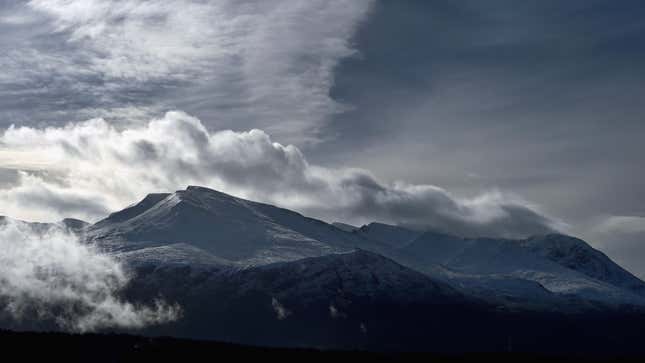
The UK’s longest-lasting patch of snow, referred to as “The Sphinx,” has completely melted away for the third time in five years, according to the BBC. Pour one out for The Sphinx, another likely lose for the planet due to global warming
Ironically, the once durable patch melted just about a two-and-a-half-hour drive away from Glasgow, the meeting place for the United Nations international climate summit happening right now. The Sphinx snow patch has only fully melted eight times in 300 years, according to the Guardian. It first disappeared in 1933, then again in 1959, 1996, 2003, 2006, 2017, and 2018. Prior to 1933, the patch may not have melted since before 1700. Rising temperatures, one of the hallmarks of climate change, are also affecting snow in other nearby Scottish mountains like Aonach Beag, which once had patches that would regularly last from one winter to the next without melting. Research conducted both by snow patch researcher Iain Cameron and a report commissioned by Cairngorms National Park Authority shows that there’s been a reduction in overall snowfall in the region as well since the 1980s.
Snow and ice patches are different from glaciers in that they stay put. But they’re the same in that they’re all being impacted by climate change.
The Sphinx’s fate represents a microcosm of a larger meeting trend taking place across much of the world. In Greenland, multiple heat waves have caused major meltdowns on Greenland’s ice sheet in recent years. They’ve also led to bizarre rainfall at the summit station, the first time that’s ever happened on record. contributed to the highest maximum daily melting rate since 1950. Meanwhile, the continent of Antarctica has lost nearly 3 trillion tons worth of ice since 1992. Closer to the UK, glaciers in the Alps have been receding and revealing relics from World War I. In short, it’s tough to be a patch of ice or snow as the climate rapidly overheats.
Down the road from The Sphinx, leaders from more than 120 countries are meeting to discuss desperate plans to limit global temperature rises to below 1.5 degrees Celsius (2.7 degrees Fahrenheit). If that goal fails, higher global temperatures will likely lead to even more worldwide melting. Half of all glaciers in the Alps are projected to disappear by mid-century even in one of the more optimistic climate scenarios. A snow patch like The Sphinx essentially stands no chance against those odds.